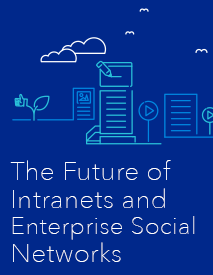An Automotive Parts Supplier Races To Expand
The foundation of the sixth largest automotive parts supplier in the world was created in just three years, following a merger and two subsequent acquisitions. However, its internal IT systems were not supportive of continued growth at that rate. The company found itself with about 20 different collaboration sites and resorted to email as the common communication and collaboration thread between corporate entities. With even more acquisitions anticipated to support its rapid growth, the company piloted an interactive intranet and then quickly deployed it to 40,000 employees. Since then, the supplier has completed several acquisitions and opened at least 15 new manufacturing plants around the world to keep up with growing demand in the market.
A Fast Food Chain Has It Their Customers’ Way
A global fast food chain’s corporate executives needed to know what was happening at each restaurant location and to communicate bi-directionally with franchisees to better serve their customers. Their existing portal-based intranet only enabled corporate-to-franchisee communication and multiple, expensive attempts to revamp it had failed to increase its interactivity. With a new intranet platform now in place, the individual franchisees are better able to serve customers by fine-tuning their location-specific advertising and get it approved quickly by corporate-level staff. In turn, employees at headquarters have a much better understanding of customers, both by location and in aggregate, based on information they are receiving from franchisees. The customer is the real winner, thanks to the interactive intranet.
A Professional Sports Franchise Slam Dunks Their Old Intranet
A professional sports franchise had been running its intranet on Microsoft SharePoint, but navigation problems and other usability issues had resulted in low adoption, even after multiple attempts to improve the intranet. A pending move to new facilities that would feature state-of-the-art phone and computer systems caused the team to re-evaluate its intranet technology as well. Prior to the move, they chose a more modern, interactive platform as the foundation of their intranet. The new technology has already helped the team meet the high volume of IT support and other help requests that resulted from the move to the new facility, and it will ultimately replace SharePoint completely
An IT Services Provider Boosts Company-Wide Interaction
A global provider of information technology services was growing quickly around the world. Geographically-separated employees were having a hard time locating the expertise they needed to generate proposals and bids for new consulting work using the company’s portal-based intranet, which had been supplemented with a wiki application. After deploying a new intranet platform loaded with capabilities that supported interaction, the firm’s employees were able to connect, communicate and collaborate with each other regardless of location and time zone. Those employees reported a 50-80% reduction in the time needed to locate expertise within the firm. As a result, they were able to shave days off of proposal and bid development efforts and lower related customer acquisition costs.
The Key To Their Success
In each of these examples, the organization refreshed or replaced its existing intranet with capabilities that allowed its employees to interact with each other, often for the first time. The new intranets helped people find and connect with other employees who were literally scattered across the world. They provided bi-directional communication channels that replaced top-down missives with dialog and learning. The interactive intranets also helped employees work together better than their traditional, portal-based intranets had ever done.
The key to success in each of these stories was the thoughtful implementation of an interactive intranet that provided the best of traditional intranets and enterprise social networks (ESNs). The new intranet combined the structure, order and personalization strengths of a traditional intranet with the relationship creation, information flow and emergent collaboration capabilities of an ESN. Each organization ended up with an intranet that facilitated the employee interaction needed to keep up with the increasing pace of business and better serve its customers. They did this by refreshing or replacing outdated technology with newer capabilities designed to foster interactivity.
What about your organization? Isn’t it time to help your employees connect, communicate and collaborate more efficiently and effectively by making your intranet more interactive?
Listen in to our webinar on June 25th at 10am PDT. The webinar will be featuring myself – Larry Hawes, Principal at Dow Brook Advisory Services, and I’ll be joined by Chris Pesola Director of IT for Plex, Mark Satterfield, VP of IT from Cox Automotive, and Jive’s very own Gia Lyons.
GET A PERSONALIZED DEMO
See how Jive works. Request a personalized demo.
See for yourself how Jive can drive productivity and engagement across your organization. Get a free personalized demo.
